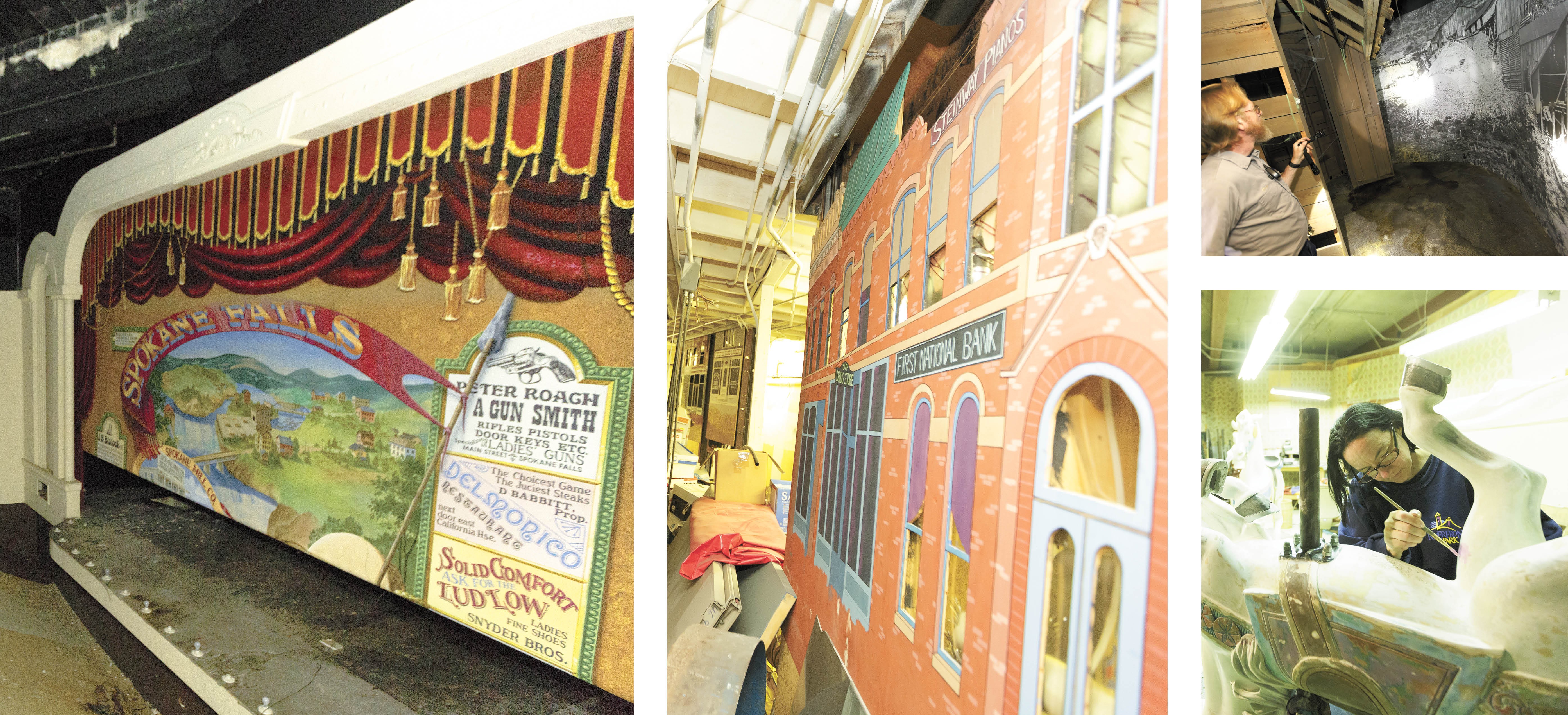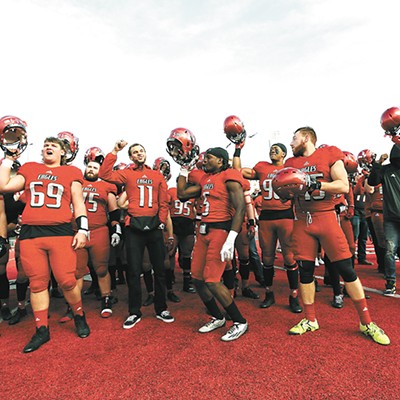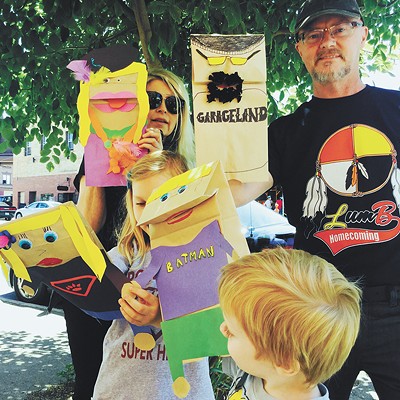
"We're going to need some flashlights," says David Randolph, facilities foreman at Riverfront Park, as he prepares to give a tour of a long-forgotten part of the city's most prominent park.
Randolph's radio crackles and the keys clipped to his pants jangle as he flicks on a flashlight to make the descent into the basement. The floor is littered with zip ties, plastic bags and fake spiders from the haunted house held last fall. The walls are exposed in areas, revealing gears and foam and spotted in places with fake blood from the haunted house.
In the 12 rooms in this mothballed basement, in the east end of the U.S. Pavilion, are replicas of a mine, wooded areas of the Inland Northwest, a passenger train and other relics of Spokane's history. It was all part of the Spokane Story, a multimillion-dollar exhibit built shortly after Expo '74 that was intended to give visitors an immersive telling of the region's history.
"Every room had a story," Randolph explains.
At the time, the Spokane Story was so elaborate, with its animatronics and set design, it could have rivaled many Disneyland rides. Logistically overambitious, it was shuttered and forgotten shortly after opening.
For more than three decades, the Spokane Story has remained in pitch-black darkness, used to store spare parts for the park's carrousel and serving as a haunted house in the fall. Now, with Riverfront Park about to undergo a $60 million renovation, this mothballed part of the city is set to resurface.
Michael Crystal remembers the heady days following Expo '74. Spokane had just earned the distinction of being the smallest city ever to host a World's Fair, and the city wanted to maintain that momentum as it converted the grounds to Riverfront Park.
Crystal had worked as a financial officer for the fair, and he decided to stick around Spokane to create an exhibit that would tell the story of Spokane. He had a $3 million budget to build an experience that would include animatronic characters of pioneers and miners, elaborate historical reconstructions and fluctuating temperatures as visitors moved into a recreated forest, he says.
The first stop on the Spokane Story, in the basement of the pavilion, was a replica of the Oval Office, with an animatronic Thomas Jefferson sending out the Lewis and Clark Expedition to explore the uncharted West. Visitors were then led through a dark tunnel with nature-like sound effects into a replica of a wooded area, where they were surprised by a growling, taxidermied bear.
The rest of the exhibit included sections on Spokane's early pioneer days, a miniaturized recreation of the Great Spokane Fire of 1889, a 19th-century passenger train and a mining shaft elevator that gave visitors the illusion of descending hundreds of feet.
"It was before its time," says Crystal.
But problems with the Spokane Story emerged early on. One of the Los Angeles-based actors who provided the voice work for the animatronic robots mispronounced "Sacajawea," an Indian woman who served as a guide and interpreter for Lewis and Clark, recalls Crystal, and a TV reporter repeatedly faulted the Spokane Story for not including the region's displaced native populations.
Although the park had the budget to build elaborate animatronics and projectors, it didn't have the budget for their required maintenance, says Crystal. The entire experience, he says, became marred by distracting glitches.
Hal McGlathery, Riverfront Park manager from 1982-96, says the Spokane Story was financially doomed. It could accommodate just 20 people at a time for the 90-minute experience, but visitors only paid about $2, making it impossible to cover the pay of the live actors portraying miners, pioneers and a saloon bartender who had been incorporated into the exhibit.
"They designed it artistically, but they didn't design it logistically," says McGlathery.
In 1981, the Spokane Story closed, says McGlathery. The bar in the replica saloon was sold off. The antique tractor was returned to the family that owned it, and the taxidermied animals are gone. A parks employee knocked the head off of the Thomas Jefferson figure while horsing around. Both McGlathery and Crystal say no one ever asked them what happened to the Spokane Story.
"What a shame," says Crystal of the Spokane Story closing. "After we put in all that effort and spent all that money."
Much of the exhibit, despite being forgotten for decades, remains intact. The artificial mine shaft remains in place, as does the the pioneer-themed stage where actors retold the city's early days and the replica of the city burning during the Great Fire. But much of it is now covered in dust.
Nobody's quite sure what will happen to remnants of the forgotten exhibit, although the possibility of the Northwest Museum of Arts and Culture taking ownership of the exhibits has been mentioned.
Councilman Mike Allen, who acts as liaison to the Spokane Park Board, says that the city finished paying off the bonds for the Spokane Story in 2013. He adds that there are some lessons to be learned from that chapter as the city now moves ahead with park renovations: Do marketing research before making large investments, and be flexible with the design of the park. Because, Allen says, "Nothing lasts forever." ♦





















